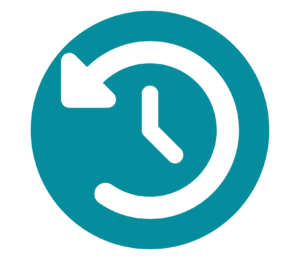In this post, we’ll look at the dreaded topic of jet lag. Business travelers who move around the American and Asian regions will be quite familiar with the phenomenon. Especially on business trips, it is a nuisance if you find it difficult to concentrate due to the time difference and are tired throughout your work meetings. We have therefore put together a few tips and tricks for you to minimize jet lag as much as possible.
What is jet lag?
Jet lag is a feeling that occurs when you cross several time zones very quickly, for example on a flight from Europe to America, or from Europe to Asia. Symptoms include fatigue, difficulty concentrating, headaches and nausea. But there can also be moodiness, loss of appetite, fluctuations in heart rate and mood swings.
Daylight and darkness control your inner clock via hormones. If this gets out of balance, jet lag symptoms occur. Shortly after arrival, your body clock has not yet adjusted to local time, and your natural bodily rhythms are thrown off because you eat and sleep at different times. Your hormone production and body temperature can also get messed up.
Is it jet lag or jetlag?
Jetlag, also known as time zone hangover in some languages like German, is made up of two words: jet (jet plane) and lag (time difference), and is usually spelled as two words. However, it is not uncommon to see the words spelled as one word as well.
Is there jet lag treatment?
There are mixed opinions about the subject of jet lag, and the internet is full of tips and tricks that can sometimes be quite far-fetched. Luckily, there are now reliable apps that can help you have as little jet lag as possible. The Timeshifter app, for example, allows users to optimize their body clocks with the new time zone by personalizing a plan to adjust to your normal sleep cycles, including when you should “seek light” and when you should have some caffeine.
Melatonin is another way to help train your body to sleep when it should sleep, and can help avoid serious jet lag side effects.
How long does it take for jet lag to wear off?
How long jet lag lasts varies from person to person; some bodies are more sensitive than others to time change. Usually you may experience the effects of jet lag if there is more than an hour’s difference in time zones.
The general rule is that you will be jet lagged one day for each time zone crossed when traveling east. However, traveling west is easier on the body than traveling east, and while you may way up earlier than usual, your body will adjust quicker. The general rule for traveling west is that you will be jet lagged two-thirds the number of time zones you cross. Sometimes for short business trips it may not even be worth trying to switch your body clock.
6 ways to beat jet lag on business trips
There are many successful methods to minimize jet lag on business trips – from fasting to getting your sleep schedule prepared in advance. Keep reading to get a list of the six most effective tips and tricks.

1. Be strategic about flight choice
It’s best to book your flights so that your arrival time is the same as your normal wake-up time, such as 7 or 8 a.m. This way, you can try to fly in the morning. That way, you can try to sleep on the plane at your usual time and arrive at your destination rested. This works especially well if you are flying east.
If you’re flying west, it’s a good idea to land in the evening. You’ll be tired from the trip, and you can check in to your hotel right after the flight and lie down. That way, you’ll wake up refreshed in the morning, and your internal clock will have already adjusted a bit to the local time zone.
For business trips across multiple time zones, it’s definitely a good idea to allow travelers to arrive at their destination a day early to acclimate. Here are more tips for business travel by air.

2. Choose the best class of service allowed by your travel policy
Class of service or travel class can make a big difference on long haul flights. Business class is much more relaxing than economy class, and travelers benefit from more legroom and additional amenities, for example.
Check your travel policy to see if it’s possible to book business class on long-haul flights. If your travel policy does not allow for this, you can try to book a better seat in economy service class, for example, with more legroom (seats at emergency exits or at the very front). You may have to pay a surcharge for this.

3. Avoid useless layovers
If at all possible, avoid layovers, as they can lengthen flights and increase the risk of missing connections on tight schedules. If a layover is absolutely unavoidable, make sure you have enough time at the airport to freshen up, relax and exercise before you have to move on.
If at all possible, avoid layovers, as they can stretch out flights and increase the risk of missing connections on tight schedules. If a layover is absolutely unavoidable, make sure you have enough time at the airport to freshen up, relax and exercise before you have to move on.
You’ll also reduce the risk of missing your connecting flight. When flights with layovers are too close together, it’s stressful for business travelers because they don’t have enough time to relax and get to the next gate. At the same time, don’t stress yourself out in case of any flight delays. It happens! Here are some important tips on what you can do in case of flight delays.

4. Stay hydrated
An important part of avoiding jet lag is staying hydrated. Drink lots of water and avoid alcohol on the plane (even if it is complimentary, it will dehydrate you) and caffeine, this is key to reducing the effects of jet lag. In fact, dehydration will make jet lag worse.

5. Regulate your sleep
Sleep is a crucial part of combatting jet lag. Try to get some rest before your flight and try to sleep as much as possible on the plane. If for some reason you can’t sleep on the plane, try to stay active and stretch regularly, which will help reduce body aches from long flights, and help you arrive in better condition to your destination. Another useful tip is to take a few days prior to your trip to slowly adjust to the time zone you will be traveling to. Maybe go to bed a little later than usual or slowly wake up sooner than usual so that your body can adjust to the new time schedule gradually and you can go to business meetings feeling awake and fresh.

6. Adjust to the local time as soon as possible
If it’s day time when you get to where you are going, get outside and move around. Getting bright light in your eyes can help your body’s clock adjust by increasing serotonin levels. This will also help you adjust to the local time as soon as possible, even if it means skipping a nap or staying up late.

DID YOU KNOW?
Fasting while traveling can also help you avoid jet lag. This is because fasting can influence circadian rhythms that become out of balance when crossing different time zones. Fasting can also help the body reset its internal clock to quickly adapt to the new time zone.

What can an employer do to help employees combat jet lag
1. Prioritize well-being
Jet lag is just one of many factors when traveling. You should make every effort in your travel policy to ensure that your business travelers can travel comfortably and stress-free.
Where possible, direct flights should be booked. The frequency of travel should be limited to allow your travelers to relax at home in between and be able to have a healthy work-life balance. Perhaps your company could consider business class for long haul flights so your business travelers arrive relaxed and refreshed.
2. Educate travelers
As a company, you are responsible for the well-being and safety of your business travelers. Therefore, you should help travelers help themselves while traveling! A good start would be to share these helpful tips for minimizing jet lag with your employees.
One thing your employees can do is to start adjusting sleep and wake times to the new time zone before they even travel. They can push bedtime ahead or back an hour each day for a week for a smooth transition. During the flight, we recommend drinking plenty of water to keep hydrated and eat fruit.
If it’s still light out when your employees arrive at their destination, it’s a good idea to encourage them to spend some time in the fresh air. This will help their bodies produce more melatonin, which will help with falling asleep. Exercise will also help relax the body and prepare it for a peaceful night’s sleep.
3. Work with a digital business travel solution
For booking and managing business travel, we recommend using digital business solutions. For example, the GetGoing travel management platform makes booking business travel easy and convenient. Here, you can search for direct flights, and rely on AI technology to figure out the safest routes. While the platform doesn’t directly help with jet lag, it does help you travel more comfortably and according to your travel policy.

